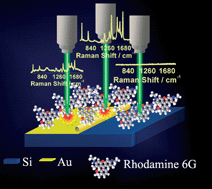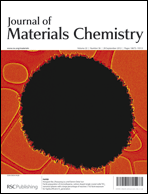We have demonstrated a new fabrication methodology for gold nano- and microtubes with regular cylinders by vapor-induced strain of porous thin films, which exhibit highly sensitive SERS signals for Rhodamine 6G detection. The strain originates from the temperature difference in the top and bottom of the gold film, which is brought about by the vapor of the Se powder, because Selenium has a low melting point. Around its melting point, Se appears in the vapor state, while the gold nanofilms remain in the solid phase. By exploiting such vapor-driven self-rolling of the gold film, shrinkage or collapse of the tube wall by capillary forces can be effectively avoided. Moreover, the diameter and the length of the obtained gold tubes can be well controlled by changing the Se powder evaporation temperature and the thickness of the gold film. The wall number of the tubes varied with the evaporation time and speed of the Se powder. Attributed to the larger surface area of the porous structures, the tubes exhibit SERS signals nearly 20 times larger than those of the gold film. This means that the detection limit of gold film is enhanced by over one order of magnitude.

You have access to this article
 Please wait while we load your content...
Something went wrong. Try again?
Please wait while we load your content...
Something went wrong. Try again?


 Please wait while we load your content...
Please wait while we load your content...